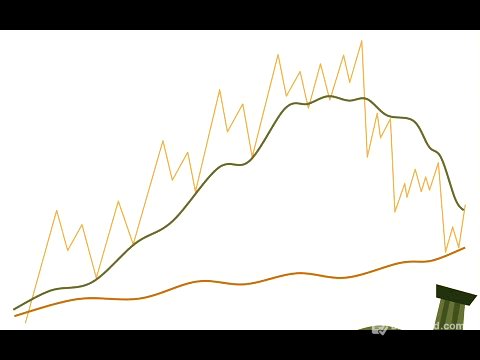TLDR;
This session provides insights into the current macroeconomic conditions, reporting season expectations, and investment strategies across various sectors. It emphasises the importance of understanding bond market dynamics, consumer behaviour, and global demand shifts. Key takeaways include a bullish outlook on gold and specific commodities, a cautious approach to major miners and banks, and a focus on diversification into sectors like energy, healthcare, and agriculture.
- Bond market changes are critical, influencing borrowing costs and asset valuations.
- Consumer spending trends and debt levels pose significant risks to asset prices.
- Gold remains a strong hedge against inflation and market uncertainty.
- China's consumer-driven stimulus impacts commodity demand and tech performance.
- Diversification into energy, healthcare, and agriculture is crucial for risk management.
Current Macroeconomic Situation [0:27]
The current macroeconomic situation is largely defined by the bond market and its yield cycle. After a 40-year decline, bond yields bottomed out during the pandemic and are now expected to rise over the next decade. This shift is creating uncertainty in the global economy and among fund managers, leading to trade wars and asset bubbles. Despite historically low unemployment, there's an anticipation of rate cuts, which seems contradictory. The Reserve Bank of Australia (RBA) recently cut rates, reflecting this complex environment.
Growth vs Defensive Stocks [1:55]
Growth stocks have experienced a bullish cycle, driven by the assumption that cheap money will fuel growth. This has put pressure on risk-off assets. However, valuations of growth stocks, particularly in the NASDAQ, are at 20-year highs, indicating potential overvaluation. Despite the narrative that US mega-techs are driving market gains, the DAX in Germany, which focuses on traditional manufacturing, has outperformed the NASDAQ since the lows of 2022, suggesting that money flow, rather than specific sectors, is pushing up valuations globally.
Sectors to Watch [3:34]
The current strategy of addressing debt with more debt is unsustainable and leads to inflation, reducing consumers' purchasing power. Consumer spending is identified as a significant risk, impacting asset prices in sectors like banks, fund managers, and property. Industries related to retail and consumer services also face high risk. The biggest worry is consumer spending and that flows onto asset prices.
Bullish Outlook on Gold [4:59]
A bullish stance on gold has been maintained since 2019, with expectations of further upside. Gold's performance is linked to inflation-adjusted bond yields; as bond yields and inflation rise, gold becomes a hedge against inflation and market risk. Given high asset prices, economic problems, and trade wars, gold is seen as a protective asset. Australian gold miners are currently generating significant cash flow due to high gold prices and a weaker Aussie dollar, which enhances margins. Companies like Evolution, Northern Star, and Pantoro are highlighted as key players in the Australian gold mining sector.
Major Miners: BHP, Rio, Fortescue [8:06]
The valuations of major miners like BHP, Fortescue, and Rio Tinto are considered reasonable, but it's important to remember that commodities are cyclical. Demand, particularly from China, is a key driver, especially for iron ore, which significantly impacts Australia's budget. China is focusing on stimulating consumer spending rather than asset bubbles, unlike many Western economies. While commodity prices may consolidate in the short term, specific commodities like rare earth, uranium, oil, and coal are outperforming the market. BHP is favoured due to its diversification and history of better asset allocation, particularly its increased exposure to copper through acquisitions like OZ Minerals.
China's Demand and Resource Stocks [10:25]
Resource stocks are somewhat protected due to quarterly updates on production and costs, making massive shocks less likely. China's economic strategy is consumer-driven, benefiting Chinese tech companies, which have outperformed even the NASDAQ. Despite some major investment banks previously deeming China uninvestable, Chinese tech, accessible through ETFs, has performed well. The stimulus directed towards consumer spending supports these tech companies, and this trend is expected to continue amid ongoing trade wars.
Risk-Reward Among Major Miners [12:31]
Among the major miners (BHP, Rio Tinto, and Fortescue), BHP is preferred due to its diversification and history of effective asset allocation. While there isn't a significant difference between BHP and Rio Tinto, BHP tends to receive a better multiple. Fortescue is heavily reliant on iron ore, which doesn't have a strong short- to medium-term outlook. BHP's strategic shift towards copper, demonstrated by increasing copper exposure, signals a focus on a commodity essential for various sectors, including housing, electric vehicles, technology, and AI.
Impact of Interest Rates on Banks [14:52]
The idea that interest rate cuts are necessary is questioned, given all-time high asset prices and historically low unemployment. The RBA's rate cuts are seen as an attempt to prevent an economic downturn, which is considered unrealistic. Banks are expected to struggle as their funding costs remain high despite RBA rate cuts, squeezing their margins. Banks are cyclical, and during economic downturns, their margins decrease, impacting dividends. Despite banks being expensive, many retail investors are unlikely to sell due to tax implications.
Credit Quality and Bad Debt Risks [18:25]
There are signs of rising delinquencies in the US, indicating potential credit quality issues. The RBA's rate cuts may be an attempt to mask underlying debt problems. Banks have been reducing their bad debt provisions, which is concerning given high borrowing levels. When bad debts eventually surface, banks will likely face significant increases in bad debt provisions, leading to potential downgrades.
Bank Dividends [19:27]
If banks offer better-than-expected dividends or special dividends, it should raise concerns about their long-term strategy. Banks have largely focused on local mortgage plays and are primarily aiming to please shareholders. While dividends may be good in the short term, the willingness of investors to sell due to tax implications remains low.
Global Oil Supply and Demand [20:38]
The energy sector is favoured, with a positive outlook on oil, coal, uranium, and LNG. Companies like Karoon (oil), Woodside (LNG), Paladin (uranium), and New Hope (coal) are highlighted. Reduced supply due to low prices and consistent demand create opportunities for price surges, especially with supply-side shocks. Events like the Ukraine war impact LNG risk, making the energy sector attractive but volatile. Uranium ETFs are at all-time highs, reflecting significant gains.
Opportunities in the LNG Market [22:41]
LNG is seen as a transition option for green energy, and despite a slowdown in the green energy transition, LNG will remain important for years. Given the gas supply imbalance between Western and Eastern Australia, APA, which owns the pipeline connecting the regions, is favoured. The demand for LNG is expected to persist, and infrastructure challenges in developing new gas sources support this outlook.
Coal and Income-Focused Energy Stocks [24:09]
With no new coal supply coming online, any demand shock can lead to significant price increases. For income-focused investors, APA, Woodside, and New Hope are highlighted. APA offers a good yield and is defensive, while Woodside has infrastructure and a decent yield. New Hope is a cash-generating coal producer with no new supply, providing a good yield. Diversification is key, and sectors like food (Rural Funds) and defensive staples like Telstra are also recommended for income.
Healthcare Sector [26:10]
Regulatory pressures and potential tariff risks in the US are significant concerns for pharmaceutical and healthcare companies. CSL is favoured for its growth potential and pipeline, with a strategy of buying when it pulls back to around $240. Sonic Healthcare, which focuses on testing services in Europe, is less exposed to US regulatory risks. As the global population ages, the demand for testing services increases, benefiting Sonic. A weaker Aussie dollar provides a tailwind for offshore earnings in the healthcare sector.
CSL vs Sonic Healthcare [29:27]
Between CSL and Sonic Healthcare, Sonic is considered to offer better risk-to-reward potential, with more upside and a better yield. While CSL could quickly rise, Sonic has the potential to increase by 50%. Sonic is preferred for its greater upside potential.
Food and Agriculture Sector [30:22]
The food sector is often overlooked but provides good returns. Fund managers tend to avoid it due to volatility, but weather events significantly impact the cycle. Food prices have decreased from post-pandemic peaks but remain 30% higher than pre-pandemic levels. Regional Australia and farmers are generally doing well, although there are drought conditions in Victoria and South Australia. Australian food is considered premium, and there's strong demand, particularly from Japan. Beef prices are rising globally and locally.
Key Players in Agriculture [32:28]
Exposure to the agricultural sector can be gained through farming, regional retail, and fertilizer/chemical companies. Elders, with its acquisition of Davids, is a major player in regional Australia. Incitec Pivot, now known as Dyno Nobel, is also favoured, with both its fertilizer and explosives businesses performing well. Potential issues with Russian fertilizer supplies could further increase fertilizer prices.
Beef Prices and Food Inflation [33:37]
Beef prices are a leading factor in food inflation. Drought conditions in Victoria and South Australia lead farmers to reduce their cattle herds, and rebuilding these herds after rain will keep beef prices elevated. Australian beef is in high demand globally, supporting prices. The food thematic is considered undervalued and poised for a comeback, similar to the recent resurgence in the energy sector.
ASX Listed Agriculture Names [35:00]
For exposure to the agriculture sector, Elders, GrainCorp, Ridley, and Dyno Nobel are recommended. These companies cover the main categories within the sector.
Key Takeaways for Reporting Season [35:25]
With markets near all-time highs and higher multiples than when rates were zero, a reality check is expected. It's a good time to re-evaluate and balance portfolios, diversifying to manage risk. Investors should consider selling some overvalued assets, such as bank exposures, and buying into sectors like healthcare, energy, and food, which are less expensive and offer diversification. Risk management is crucial to protect portfolios if the economic cycle turns.









